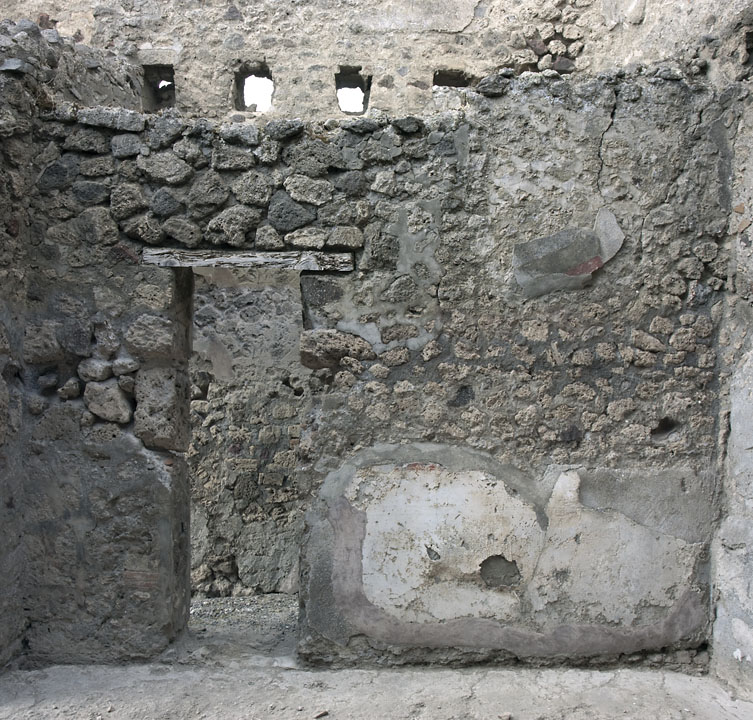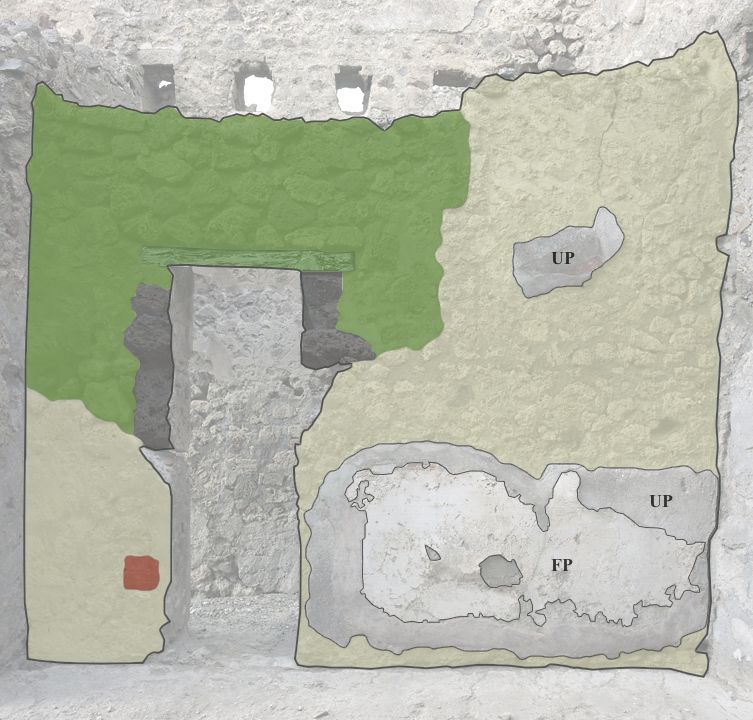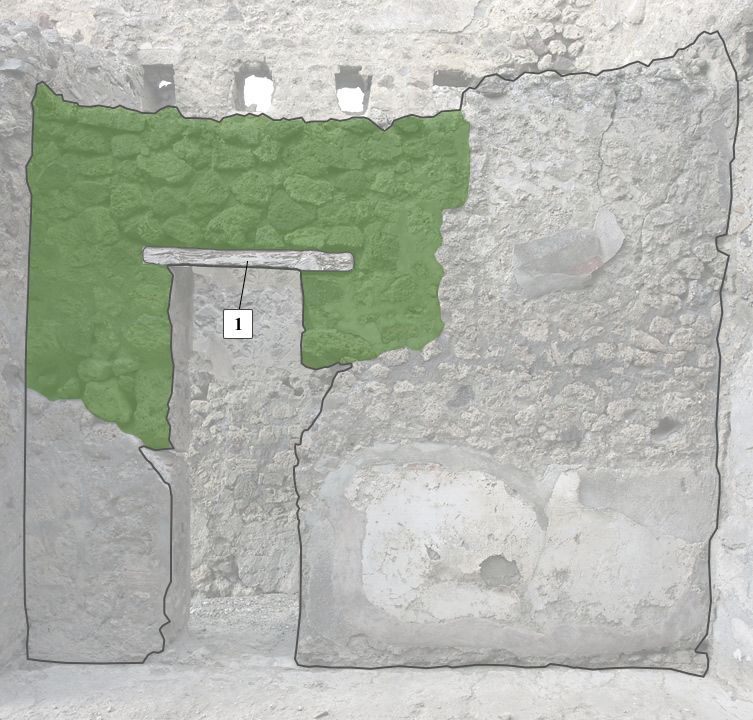North Wall
Description
Mats Holmlund
The construction method is mainly opus incertum, except around a doorway into room 3, where a part of the west doorpost is built in opus listatum and the upper parts of both doorposts are built in some sort of opus quadratum. The incertum part consists mainly of limestone with some pieces of cruma and lava, while the "quadratum" part consists of limestone blocks and the listatum part consists of two rows of tiles alternated with pieces of tufa.
The only features in the wall are the doorway, the threshold and the wooden lintel above it. The door is circa 0.60 m wide and 1.95 m high. The doorposts have been reinforced by modern cement, but there is still a big "dent" in the eastern doorpost between 1.30 to 1.50 m from the threshold. The threshold is cast and made of stones and mortar. The wooden lintel above the door and it is circa 1.00 m wide and 0.08 m high. It’s badly weathered and consists of desiccated wood. There are some spolia in the wall. In the "dent" in the east doorpost, there are some pieces of tile visible.
Overall, the mortar of the wall is yellowish grey and contains grains of lava and limestone (and some random grains of cruma). From circa 1.10 m from the floor on the west side of the door and to the top of the wall, the mortar changes character and becomes dark grey with grains of, primarily, lava. The same holds true for the wall on the east side of the door, but it starts a bit higher up, circa 1.40 m from the floor. In the east corner, however, from about 1.25 m from said corner and from approximately 1.65 m from the floor to the top of the wall, the mortar is the same yellowish grey that contains grains of lava and limestone.
The darker grey mortar has been applied to the wall in modern times.
The lower part of the wall, from the doorway to the east corner, is still to a large extent covered by plaster. The area stretches from circa 0.05/0.10 m from the floor up until between 1.00 and 1.10 m, and from 0.25 m from the east doorpost to the east corner of the wall. The area is held in place by bands of modern pinkish grey and (simply) grey mortar. The surface layer of the wall plaster is still (but barely) preserved in the area and at the top of the plaster area there are remains traces of red paint on the, otherwise, white surface.
Approximately 2.35 m from the west corner and 1.95 m from the floor, there’s another area where plaster remains on the wall. The area is circa 0.60 m wide and 0.35 m high, and consists mainly of plaster subsurface. However, there is a small area where red pigment remains.
The western part of the wall has been reconstructed in modern times; from circa 1.10 m from the floor on the west side of the door and to the top of the wall. From the eastern doorpost and circa 1.25 eastwards, and from 1.40 m from the floor to the top of the wall, it has been rebuilt.



